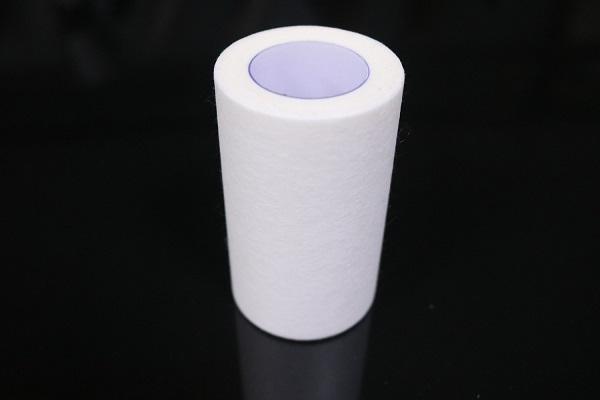Fabric medical tape is a vital tool in medical kits, hospitals, and homes. Known for its flexibility, breathability, and strong adhesion, it plays a significant role in wound care, injury prevention, and post-surgical recovery.
What is Fabric Medical Tape?
- Definition: Fabric medical tape is an adhesive bandage tape made from cloth material, often cotton or a blend, designed to secure dressings or medical devices to the skin.
- Breathable Material: Its woven structure allows airflow, promoting faster healing and reducing the risk of skin maceration.
- Flexible and Stretchable: Unlike rigid tapes, fabric medical tape moves with the body, making it ideal for joints and areas with frequent movement.
- Hypoallergenic Properties: Many versions are latex-free and designed to minimize skin irritation, making them suitable for sensitive skin.
- Strong Adhesion: The adhesive backing is designed to stay in place for extended periods, even with sweat or slight moisture.
Common Uses of Fabric Medical Tape
- Securing Wound Dressings: It’s commonly used to hold gauze and other dressings in place over cuts, abrasions, or surgical sites.
- Stabilizing Medical Tubing: Fabric medical tape is often used to affix IV lines or catheter tubes securely.
- Preventing Blisters and Chafing: Athletes use it to protect areas prone to blisters or friction during physical activity.
- Supporting Minor Sprains: It can provide light compression and support for joints like wrists, ankles, or fingers.
- Post-Surgical Care: Helps keep incisions covered and clean during recovery.
Benefits of Using Fabric Medical Tape
- Comfortable Wear: The soft fabric base is gentle on the skin and reduces discomfort during long-term use.
- Ease of Application and Removal: It tears easily by hand and removes cleanly without leaving sticky residue.
- Durability: Even under stress or sweat, fabric medical tape maintains its hold.
- Customizable Sizes: It can be easily trimmed or torn to the required length or width.
- Water Resistance: While not waterproof, many fabric tapes are water-resistant, maintaining adhesion even with mild exposure to moisture.
How to Apply Fabric Medical Tape Correctly
- Clean and Dry the Skin: Before application, ensure the area is clean and moisture-free to enhance adhesion.
- Cut or Tear to Desired Length: Fabric medical tape can be hand-torn or cut with scissors depending on the level of precision needed.
- Smooth Down Edges: After application, press firmly and smooth out the tape edges to prevent peeling.
- Avoid Wrapping Too Tightly: Ensure circulation is not restricted if wrapping around limbs or joints.
- Monitor for Irritation: Even hypoallergenic tape can sometimes irritate; check skin regularly for redness or itching.
When Not to Use Fabric Medical Tape
- Over Open Wounds: Avoid placing fabric medical tape directly on wounds; it should only secure the dressing.
- On Highly Mobile Areas without Support: For high-impact sports or vigorous movement, more reinforced taping may be needed.
- If Skin Sensitivity Occurs: Discontinue use if rashes, blisters, or other adverse skin reactions occur.
Choosing the Right Fabric Medical Tape
- Check the Adhesive Strength: Depending on the intended use, choose between light, medium, or strong adhesion.
- Size Matters: Narrow widths are good for fingers and toes, while wider tapes work better for larger dressings.
- Latex-Free Options: For allergy-prone individuals, ensure the tape is clearly marked as latex-free.
- Sterility and Packaging: Opt for individually packed or sealed tapes if sterility is essential.
- Reputation of the Brand: Use reputable brands known for medical-grade quality to ensure effectiveness and safety.
Storage and Shelf Life of Fabric Medical Tape
- Store in a Cool, Dry Place: Heat and humidity can degrade the adhesive quality.
- Keep It Sealed: If not using the entire roll, reseal or place in a zip-lock bag to keep it clean and dust-free.
- Check Expiration Date: Adhesive properties can weaken over time; always use within the recommended period.
- Avoid Sunlight: Prolonged exposure to UV rays can damage the tape’s fabric and adhesive.
- Label Partially Used Rolls: For hygiene, label with the date opened and avoid using on broken skin after extended periods.

